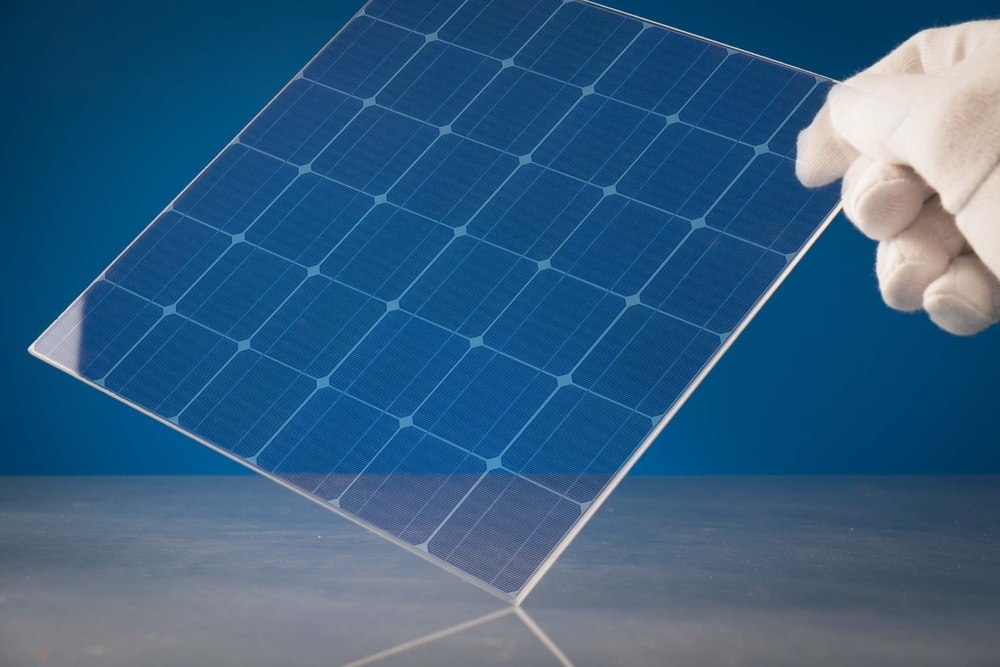
Wafricnews - June 16, 2025
While much of the world is still catching up with rooftop solar energy, Russia has made a move that’s being called nothing short of game-changing. And no, it’s not just another update — it’s a complete reimagination of what solar panels can be.
The scientists behind this innovation? Researchers from the National University of Technology in Russia. What did they do? They developed semi-transparent perovskite solar panels that not only break records in efficiency but also look like glass.
Yes — imagine your windows powering your home. It’s no longer sci-fi. It’s real.
Solar Panels Have Been Good… But Not Great
Let’s break this down.
For decades, silicon solar panels have been the go-to for clean energy. They’re reliable, cost-effective, and easy to install. But even with all those good points, they come with limitations:
- They’re rigid and bulky.
- They don’t always fit well into urban buildings or modern designs.
- Their efficiency — the amount of sunlight they turn into electricity — usually tops out at about 22%.
That might sound fine, but when you think about the global energy demand — from cities like New York to Lagos — that number barely scratches the surface.
The Russian Twist: Transparent Tech That Delivers
Now here comes the mind-blowing part.
Russian researchers have figured out a new way to make semi-transparent solar panels using a unique material called perovskite. But it’s not just the material that’s interesting — it’s also the technology behind it.
They used something called ion beam sputtering — a method that replaces traditional techniques and avoids damaging the panel during production. Sounds technical, right? Here’s what it means in plain English:
- Better materials
- Cleaner production
- A massive jump in performance
And just how big was that jump? These new solar panels went from an efficiency of 3.12% to 12.65% — and they’re still transparent. That’s a leap nobody saw coming.
Wait, What is Perovskite?
Perovskite has been around for a while. Scientists have been studying it since at least 2009, when early solar cells using it hit just 3.8% efficiency. But fast-forward to today, and newer perovskite-based cells in laboratories are reaching over 29% efficiency — even beating traditional silicon in some cases.
Now, combine that with the fact that perovskite cells can be transparent and flexible? You’ve got a material that could power the future.
So What Does This Mean for the World — and Africa?
This is where things get exciting.
Because these new solar panels are see-through, they can be used in ways we never thought possible before:
- Windows that double as energy sources
- Skylights that light and power a home at once
- Glass walls that fuel entire buildings
In places like Lagos, Nairobi, Accra, and Johannesburg, this kind of innovation could be revolutionary. Picture city buildings generating their own power without needing space on the roof. Picture homes in remote areas powered by their own windows. This isn’t just sustainable — it’s stylish, space-saving, and smart.
More Than Just Tech — A New Way of Living
The best part? This technology integrates beautifully with modern architecture. Instead of slapping panels on rooftops as an afterthought, solar energy can now become a natural part of the design. It turns ordinary surfaces — like the side of your house or office building — into power stations.
Think about public spaces in African cities. Transparent solar panels could be used in:
- Bus stops
- Shopping centres
- Schools
- Healthcare facilities
And in rural communities? It could mean less dependence on expensive diesel generators and more access to clean, affordable energy.
Is This the Future of Energy?
There’s no question — the world is moving toward cleaner, more sustainable power. And this Russian invention might just push us a lot faster in that direction.
From the look of things, we’re stepping into a future where solar energy isn’t just found on rooftops — it’s in the windows, the walls, and maybe even the screens of our devices.
Whether you live in downtown Cape Town or the outskirts of Kano, this kind of innovation could mean fewer blackouts, more self-sufficiency, and energy that doesn’t compromise beauty or design.
Russia may have just flipped the solar industry on its head — but for Africa, it could be the opportunity we’ve been waiting for.
By WafricNews Desk.
By WafricNews Desk.


Comment
To post a comment, you have to login first
LoginNo Comments Yet...